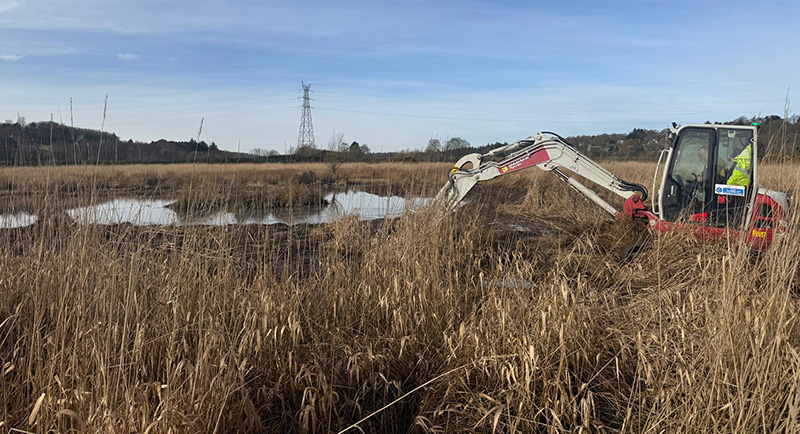
SCOTTISH Water has revealed that work to provide an improved habitat for wading and farmland birds, as well as protecting and enhancing biodiversity, has been carried out on land around an Aberdeen reservoir.
Scottish Water, which owns and operates Inchgarth Reservoir, and local community group Inchgarth Biodiversity Initiative (IBI) of Cults, Bieldside and Milltimber Community Council, have worked together with contractor Ground Control to create two wader scrapes on grassland at the site – shallow pools of water which provide feeding sites for adults and chicks of farmland waders.
In addition, an area has been tilled and planted up with a winter seed crop to help attract more birds and pollinating insects, while a number of birch trees have been planted along the perimeter of the site by IBI volunteers.
The area around the reservoir already hosts a number of bird species listed as being of conservation concern, including Grasshopper Warbler, Woodcock, Linnet and Yellowhammer, as well as a range of wading birds.
Scottish Water project manager Max Currie said, “We are delighted that this important biodiversity work has now been delivered at the site which will play a key role in providing an attractive habitat to a number of birds species that are declining in the UK. We are committed to looking for opportunities to improve biodiversity across our sites wherever possible and are very grateful to the members of Inchgarth Biodiversity Initiative for their support, expertise and patience in helping to shape and deliver this project alongside our contractors Ground Control.”
Chris Hart, business development director (utilities) for Ground Control, added, “It’s great to be working with a company that shares our passion for nature and biodiversity across Scotland. By creating an environment for wading birds to flourish and completing the works in a way that enables the passionate and knowledgeable Inchgarth Biodiversity Initiative (IBI) to further develop and manage the biodiversity elements at the site, we’re excited to see this ecosystem develop.”










